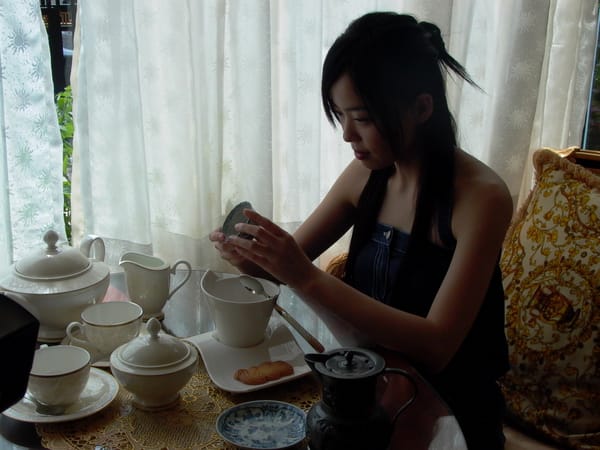When you walk into a tea house and see an array of tea utensils on display, have you ever wondered how to choose the right ones? A good teapot and a beautifully crafted teacup are not merely tools for brewing—they are vessels of tea culture. The perfect harmony between tea utensils and tea leaves is like a musical chord that enhances and elevates the tea’s flavor to its fullest expression.
The art of tea utensil pairing is not purely about aesthetics. It is a comprehensive craft that combines material science, artisanal heritage, and the wisdom of tea tasting. The material of the teaware subtly and deeply influences the resulting tea liquor. With the right knowledge, every tea session can become a complete sensory experience.
In the sections to follow, we will explore the characteristics and pairing principles of various tea utensils, from choosing the right teapot to selecting the ideal teacup, from the effect of materials to the consideration of craftsmanship—so that you, too, can become an artist of tea pairing.
The Core Principles of Choosing a Teapot: Material Defines Flavor
The teapot is the soul of the entire tea set, and its material characteristics directly influence the final presentation of the tea. The zisha (Yixing clay) teapot is renowned for its dual-pore structure, which allows it to retain heat while still breathing. It is particularly suitable for brewing oolong and Pu’er teas that require high temperatures and multiple infusions. The mineral composition of zisha interacts subtly with the tea liquor, and over time forms a tea patina that can actually enhance the richness of the brew.
The white porcelain teapot has a fine, smooth texture and moderate thermal conductivity. Its greatest advantage is that it does not affect the original flavor of the tea, making it ideal for showcasing the true essence and aroma of green tea or white tea. Its pure white body also highlights the color variations of the tea liquor beautifully.
The glass teapot, with its transparency, adds a visual enjoyment to the tea experience. It is especially suited for brewing floral teas or delicate bud teas, as one can clearly observe the unfurling of the leaves. Chemically stable, glass does not react with the tea, making it ideal for those who seek purity in taste.
The clay teapot offers excellent heat retention. The micro-porous structure of the clay can soften the water, making it especially suitable for teas that require long steeping. Clay from different regions contains different minerals, imparting unique terroir-like characteristics to the tea.
The Aesthetic Wisdom of Teacup Pairing: Harmony Between Form and Function
The choice of teacup is equally thoughtful. Different shapes and materials influence the aroma concentration and mouthfeel of the tea. The tasting cup generally holds 30–50 ml, with a moderately wide opening that captures fragrance while being easy to sip from. This design is ideal for savoring high-quality teas, allowing every sip to reveal layered changes in the liquor.
The scent cup is a delicately designed vessel with a tall, narrow body that captures aroma beautifully. It is usually used in tandem with a tasting cup, creating a ritual of “smell first, then sip.”
The gaiwan is a versatile piece that functions as both a teapot and a teacup, making it a classic tool in Gongfu tea ceremonies. With its three-part design—bowl, lid, and saucer—it is both practical and elegant. The wide opening allows observation of the tea color, while the lid helps control the strength of the infusion.
The cha hai (fairness pitcher) plays a key role in ensuring consistency. It receives tea from the teapot so that all guests get a brew of the same strength. A good cha hai should pour smoothly, cut cleanly, and avoid dripping.
The Science of Materials: Subtle Influences on Tea Liquor
Understanding the scientific properties of materials is fundamental to effective pairing. Zisha’s dual-pore structure gives it excellent breathability and insulation. Its quartz, mica, and other minerals subtly react with the compounds in tea to improve texture and complexity.
The vitrification level of porcelain determines its impact. High-fired porcelain has high stability and does not alter the tea’s original flavor. Low-fired porcelain may have slight adsorption properties, subtly affecting the taste.
Silver tea utensils have natural antibacterial qualities and can soften water, enhancing sweetness in the brew. The release of silver ions may also have health benefits. However, silverware requires diligent care, including regular cleaning and polishing.
Bamboo utensils are eco-friendly and carry a gentle fragrance, especially suitable for floral teas. The porous structure of bamboo can absorb impurities from water, resulting in a purer tea taste.
The Artistic Principles of Utensil Pairing: Harmony and Individual Expression
An excellent tea utensil ensemble considers both function and beauty. A unified aesthetic style is key—whether your set leans classical or modern minimalist, the visual language should be consistent throughout.
Color coordination should consider the hue of the tea liquor. For example, dark-colored teas pair well with light-colored vessels like white porcelain; lighter teas harmonize with soft-toned ware such as celadon. Thoughtful contrast and coordination enhance visual enjoyment.
Size proportion matters too. The teapot should generally be 3–4 times the volume of the cup, while the cha hai should hold slightly more than the teapot. This ensures both practicality and elegance.
Textural layering can elevate the entire tea table. Smooth porcelain teaware pairs well with rustic bamboo trays; refined zisha teapots can be matched with rough stone tea trays—achieving harmony through contrast.
Practical Buying Guide: Building Your Own Tea Utensil Collection
Building a personal collection takes time and thought, balancing usability and collectible value. Beginners are advised to start with a simple white porcelain set—teapot, tasting cups, cha hai, and tray. These are versatile and easy to maintain, making them ideal for daily use.
Intermediate collectors may wish to invest in zisha teaware. Focus on the purity of the clay and the finesse of craftsmanship. Authentic zisha feels smooth and warm, has a natural sheen, and produces a crisp sound when tapped. Seek out works from recognized regions and artisans for both use and value.
Professional-grade teaware should reflect your personal tea preferences and budget. For example, if you mainly drink Pu’er, a zisha teapot is ideal. For green tea lovers, glass cups bring out the delicate flavor and beauty of the infusion.
Maintenance is also vital. Zisha teapots should be regularly “seasoned” with tea liquor; porcelain must avoid sudden temperature changes; silver utensils need periodic polishing to maintain their shine.
Choosing tea utensils is a profound art that deepens with practice and personal experience. Each piece has its own personality and place. The best teaware is not the most expensive—but the one that fits your habits and aesthetic. With the companionship of your ideal teaware, every tea session becomes a moment of beauty and inner reflection.


